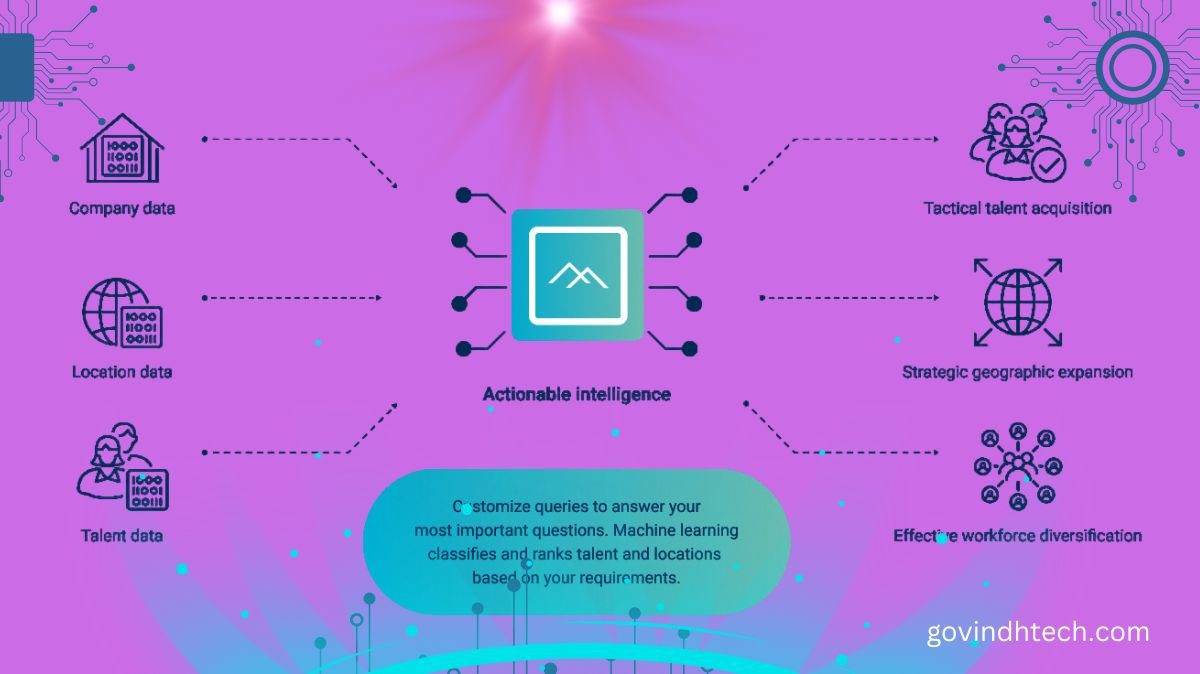Terrain Analytics
The game of acquiring talent is now played on a global scale. In spite of the fact that its positive effects are widely discussed, relatively little attention is paid to the obstacles that it places in the way of efficient HR decision making.
- Where exactly can your company find the skilled workers it requires?
- How can you be sure that they are the best candidate?
- How much should you anticipate spending on them?
Terrain Analytics, a member of the Intel Liftoff program, provides HR leaders with sound insights into their most valuable investment. These answers are provided by breaking down information silos and removing information barriers. Their platform enables businesses to find and hire the most qualified candidates at the most competitive rates.
Those Who Are at the Forefront of Talent Intelligence
Terrain is a workforce analytics data platform that was established in 2020 by Mark Jacobson and Riley Kinser. This platform is utilized by businesses in order to make better hiring decisions. It gives Terrain’s clients the ability to zero in on the right talent in granular detail, all the way down to the neighborhoods in which those talent members live. What is the result? Higher quality hires made in less time and at lower cost than before.
The Intel Liftoff Development Sprint Has Been Accepted By Terrain Analytics
In addition to paving new ground in the field of talent intelligence, Terrain Analytics is also a premium member of the Intel Liftoff program. As a result, we were thrilled to have them join us for the second iteration of our development sprint on the Intel Developer Cloud for artificial intelligence startups. The LLM (Large Language Models) powered feature enablement was the main topic of discussion at this hackathon. This event’s objective was to provide the participating startups with access to accelerated computing solutions such as 4th Generation Intel Xeon Scalable processors and Intel Data Center GPU Max Series 1550, with the goal of determining what the participating startups were capable of accomplishing with next-generation LLM capabilities.
The Restrictions Placed on LLMs
The team working on Terrain decided to use LLMs for text classification rather than traditional Machine Learning (ML) models because LLMs have a higher success rate than traditional ML models. They began testing the new features by utilizing the OpenAI Ada API, and the results of those trials were positive. However, despite its impressive power, OpenAI moves at a frustratingly snail’s pace.
They were able to construct a feature that could parse job listings by utilizing OpenAI’s Ada Application Programming Interface. In order to circumvent the limitations imposed by both cost and throughput, they made the decision to participate in the sprint with Intel Liftoff.
Their mission was to use an LLM to classify text more accurately than ML and more quickly than OpenAI could manage. This is extremely important because ML-powered solutions do not have the context that an LLM does, and they typically do not perform well with text that is not written in English. The final objective was to achieve the capability of taking a number of features and classifying them into the labels that Terrain would then use.
When that was finished, they would need to do a second round of classifications, this time using the labels from the first model as a feature in the classification. Before beginning the second steps of the model’s training or inference process, this step needs to be completed first.
This is what they have accomplished:
- LLM use case on Intel Data Center GPU was fine-tuned to optimize performance. Max
- Proceeded to run inference on Xeon processors of the 4th generation
- Their results with Ada were surpassed by the new model, which had both lower costs and higher throughput.

By utilizing hardware from Intel, Terrain is now capable of efficiently scaling Deep Learning/Language Learning Models (DL/LLMs) without being constrained by computational limitations. According to Nathan Berkley, a data scientist at Terrain Analytics, “Both of the models I made had better success metrics than the ones I built with OpenAI’s Ada model, and were 15 times faster to run.” When these models have been fine-tuned to their optimal settings, it will be possible to correctly classify a variety of job titles that are not currently classified. After that, Terrain will be able to map these to their other datasets and create a feature that their users have been requesting for quite some time.


[…] by Intel for the Habana Gaudi2 accelerators, the 4th Generation Intel Xeon Scalable CPUs, and the Intel Xeon CPU Max Series. The findings demonstrate Intel’s competitive performance for AI inference and confirm the […]
[…] used Intel hardware, in particular the Intel Developer Cloud, Intel Data Center GPU Max, and 4th Generation Xeon Scalable CPUs. This partnership takes use of both CPU and GPU capabilities, enabling effective parallelization […]
[…] each of which has a capacity of 3.84 terabytes (TB), as well as 112 cores of system memory and 4th Generation Intel Xeon CPU processors with a total of 112 cores […]
[…] Intel demonstrates their Xeon Scalable ‘Granite Rapids’ processors, which are members of the next generation of computer CPUs […]
[…] can be powerful, but cost and availability may be problematic. Distributed AI training on AWS using Intel Xeon CPUs is cheaper than resource-intensive AI training. We trained enormous models using AI nodes in a […]